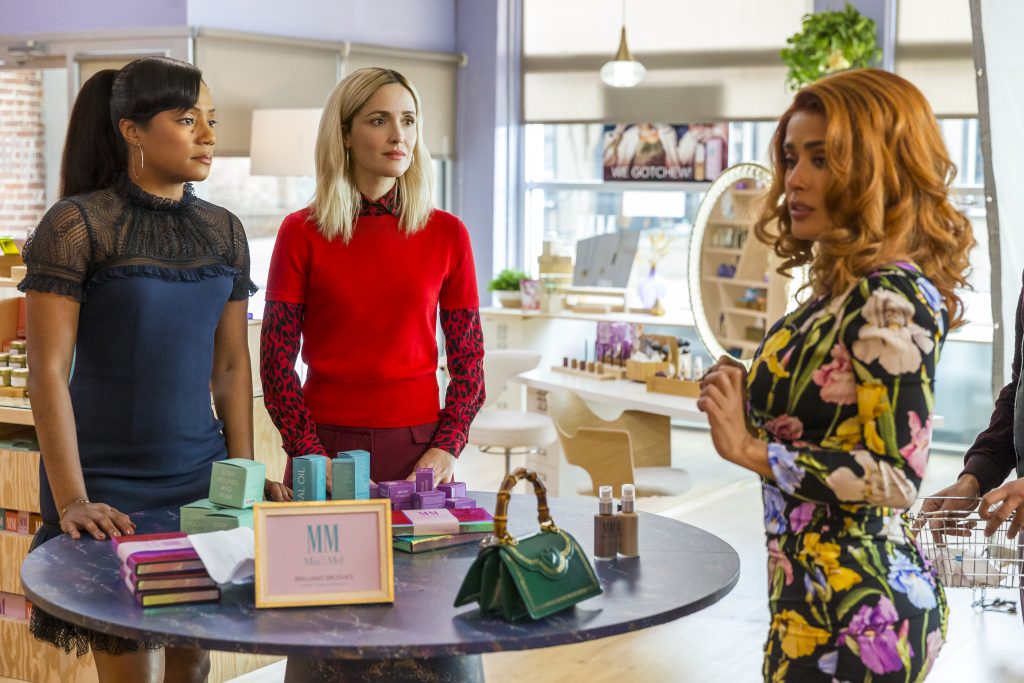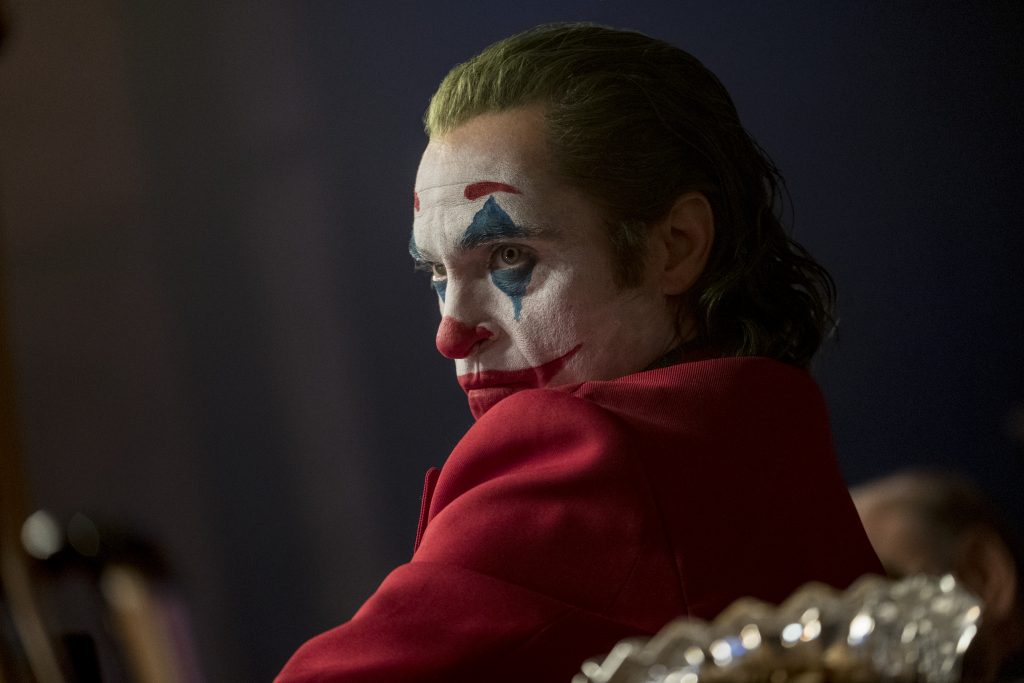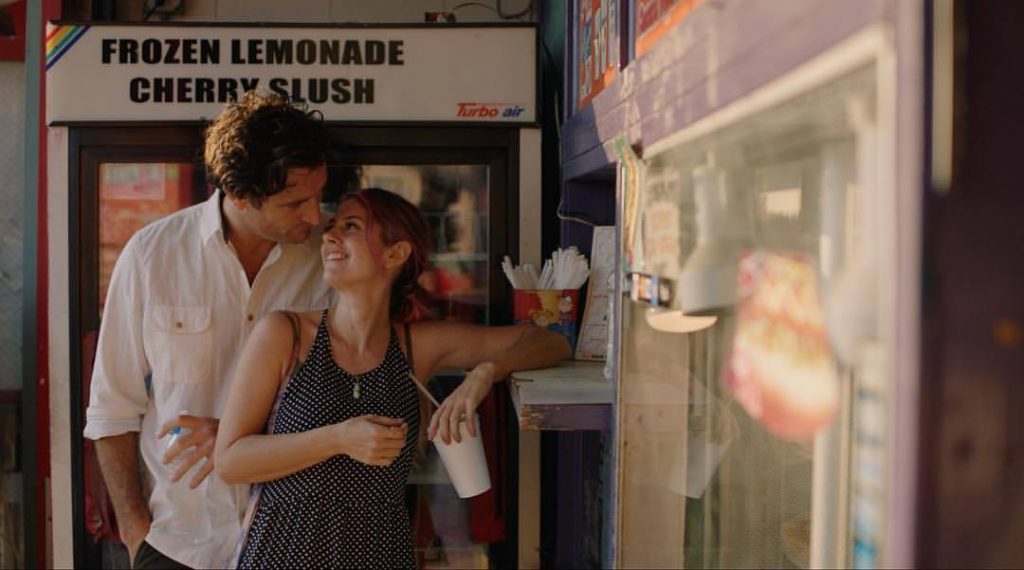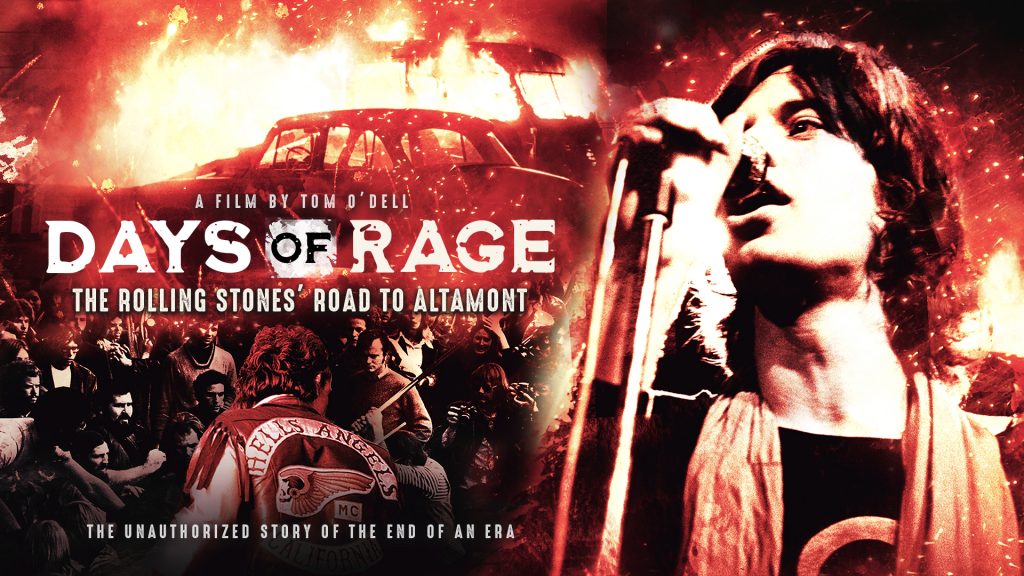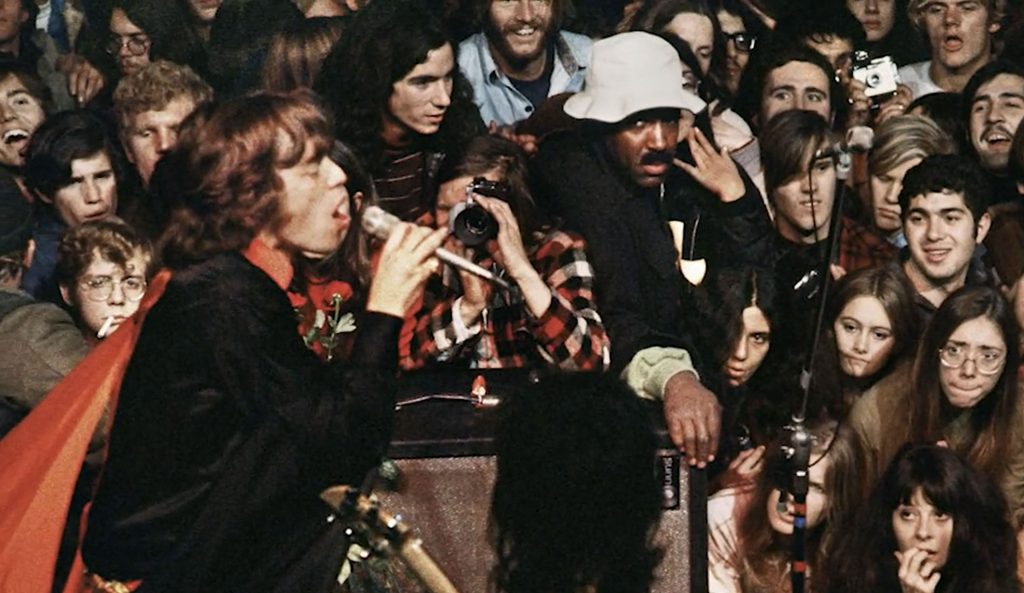January 12, 2020
by Carla Hay
With four prizes, Columbia Pictures’ movie drama “Once Upon a Time in Hollywood”(set in 1969) emerged as the top winner at the 25th Annual Critics’ Choice Awards, which were presented on January 12, 2020, at Barker Hangar in Santa Monica, California. Taye Diggs hosted the show, which was televised in the U.S. on The CW.
“Once Upon a Time in Hollywood” won the top movie prize (Best Picture), as well as Best Original Screenplay (for writer/director Quentin Tarantino), Best Supporting Actor (for Brad Pitt) and Best Production Design (for Barbara Ling and Nancy Haigh). Coming close behind in movie wins was Universal Pictures’ World War I drama “1917,” which won three awards: Best Director (for Sam Mendes, who won the prize in a tie with “Parasite” director Bong Joo); Best Cinematography (for Roger Deakins); and Best Editing (for Lee Smith).
In the TV categories, “Fleabag” was the top winner, with three awards: Best Comedy Series, Best Actress in a Comedy Series (for Phoebe Waller-Bridge) and Best Supporting Actor in a Comedy Series (for Andrew Scott).
Netflix’s “The Irishman” was the top nominee overall, going into the ceremony with 14 nods. But in the end, the mob drama only one Critics’ Choice Award: Best Acting Ensemble. The cast includes Robert De Niro, Joe Pesci, Al Pacino and Ray Romano.
The ceremony also had mutliple categories that resulted in a voting tie this year. In addition to a tie for Best Director, there were ties for Best Song and Best Tall Show. The winners for Best Song were “Glasgow (No Place Like Home)” from the drama “Wild Rose” and “(I’m Gonna) Love You Again” from the musical “Rocketman.” The winners for Best Talk Show were “Late Night With Seth Meyers” and “The Late Late Show With James Corden.”
Eddie Murphy received the Lifetime Achievement Award. Kristen Bell got the #SeeHer Award, which is given to a female entertainer who is a role model for female empowerment.
The 25th annual Critics’ Choice Awards show was produced by Bob Bain Productions and Berlin Entertainment.
According to a Critics Choice Association press release: “The Critics Choice Association is the largest critics organization in the United States and Canada, representing more than 400 television, radio and online critics. It was organized this year with the formal merger of the Broadcast Film Critics Association and the Broadcast Television Journalists Association, recognizing the blurring of the distinctions between film, television, and streaming content.”
The following is the complete list of winners and nominations for the 2020 Critics’ Choice Awards:
*=winner
MOVIES
BEST PICTURE
“1917”
“Ford v Ferrari”
“The Irishman”
“Jojo Rabbit”
“Joker”
“Little Women”
“Marriage Story”
“Once Upon a Time in Hollywood”*
“Parasite”
“Uncut Gems”
BEST ACTOR
Antonio Banderas – “Pain and Glory”
Robert De Niro – “The Irishman”
Leonardo DiCaprio – “Once Upon a Time in Hollywood”
Adam Driver – “Marriage Story”
Eddie Murphy – “Dolemite Is My Name”
Joaquin Phoenix – “Joker”*
Adam Sandler – “Uncut Gems”
BEST ACTRESS
Awkwafina – “The Farewell”
Cynthia Erivo – “Harriet”
Scarlett Johansson – “Marriage Story”
Lupita Nyong’o – Us
Saoirse Ronan – “Little Women”
Charlize Theron – “Bombshell”
Renée Zellweger – “Judy”*
BEST SUPPORTING ACTOR
Willem Dafoe – “The Lighthouse”
Tom Hanks – A Beautiful Day in the Neighborhood”
Anthony Hopkins – “The Two Popes”
Al Pacino – “The Irishman”
Joe Pesci – “The Irishman”
Brad Pitt – “Once Upon a Time in Hollywood”*
BEST SUPPORTING ACTRESS
Laura Dern – “Marriage Story”*
Scarlett Johansson – “Jojo Rabbit”
Jennifer Lopez – “Hustlers”
Florence Pugh – “Little Women”
Margot Robbie – “Bombshell”
Zhao Shuzhen – “The Farewell”
BEST YOUNG ACTOR/ACTRESS
Julia Butters – “Once Upon a Time in Hollywood”
Roman Griffin Davis – “Jojo Rabbit”*
Noah Jupe – “Honey Boy”
Thomasin McKenzie – “Jojo Rabbit”
Shahadi Wright Joseph – “Us”
Archie Yates – “Jojo Rabbit”
BEST ACTING ENSEMBLE
“Bombshell”
“The Irishman”*
“Knives Out”
“Little Women”
“Marriage Story”
“Once Upon a Time in Hollywood”
“Parasite”
BEST DIRECTOR
Noah Baumbach – “Marriage Story”
Bong Joon Ho – “Parasite”* (tie)
Greta Gerwig – “Little Women”
Sam Mendes – “1917”* (tie)
Josh Safdie and Benny Safdie – “Uncut Gems”
Martin Scorsese – “The Irishman”
Quentin Tarantino – “Once Upon a Time in Hollywood”
BEST ORIGINAL SCREENPLAY
Noah Baumbach – “Marriage Story”
Rian Johnson – “Knives Out”
Bong Joon Ho and Han Jin Won – “Parasite”
Quentin Tarantino – “Once Upon a Time in Hollywood”*
Lulu Wang – “The Farewell”
BEST ADAPTED SCREENPLAY
Greta Gerwig – “Little Women”*
Noah Harpster and Micah Fitzerman-Blue – A Beautiful Day in the Neighborhood”
Anthony McCarten – “The Two Popes”
Todd Phillips & Scott Silver – “Joker”
Taika Waititi – “Jojo Rabbit”
Steven Zaillian – “The Irishman”
BEST CINEMATOGRAPHY
Jarin Blaschke – “The Lighthouse”
Roger Deakins – “1917”*
Phedon Papamichael – “Ford v Ferrari”
Rodrigo Prieto – “The Irishman”
Robert Richardson – “Once Upon a Time in Hollywood”
Lawrence Sher – “Joker”
BEST PRODUCTION DESIGN
Mark Friedberg, Kris Moran – “Joker”
Dennis Gassner, Lee Sandales – “1917”
Jess Gonchor, Claire Kaufman – “Little Women”
Lee Ha Jun – “Parasite”
Barbara Ling, Nancy Haigh – “Once Upon a Time in Hollywood”*
Bob Shaw, Regina Graves – “The Irishman”
Donal Woods, Gina Cromwell – “Downton Abbey”
BEST EDITING
Ronald Bronstein, Benny Safdie – “Uncut Gems”
Andrew Buckland, Michael McCusker – “Ford v Ferrari”
Yang Jinmo – “Parasite”
Fred Raskin – “Once Upon a Time in Hollywood”
Thelma Schoonmaker – “The Irishman”
Lee Smith – “1917”*
BEST COSTUME DESIGN
Ruth E. Carter – “Dolemite Is My Name”*
Julian Day – “Rocketman”
Jacqueline Durran – “Little Women”
Arianne Phillips – “Once Upon a Time in Hollywood”
Sandy Powell, Christopher Peterson – “The Irishman”
Anna Robbins – “Downton Abbey”
BEST HAIR AND MAKEUP
“Bombshell”*
“Dolemite Is My Name”
“The Irishman”
“Joker”
“Judy”
“Once Upon a Time… in Hollywood”
“Rocketman”
BEST VISUAL EFFECTS
“1917”
“Ad Astra”
“The Aeronauts”
“Avengers: Endgame”*
“Ford v Ferrari”
“The Irishman”
“The Lion King”
BEST ANIMATED FEATURE
“Abominable”
“Frozen II”
“How to Train Your Dragon: The Hidden World”
“I Lost My Body”
“Missing Link”
“Toy Story 4”*
BEST ACTION MOVIE
“1917”
“Avengers: Endgame”*
“Ford v Ferrari”
“John Wick: Chapter 3 – Parabellum”
“Spider-Man: Far From Home”
BEST COMEDY
“Booksmart”
“Dolemite Is My Name”*
“The Farewell”
“Jojo Rabbit”
“Knives Out”
BEST SCI-FI OR HORROR MOVIE
“Ad Astra”
“Avengers: Endgame”
“Midsommar”
“Us”*
BEST FOREIGN LANGUAGE FILM
“Atlantics”
“Les Misérables”
“Pain and Glory”
“Parasite”*
“Portrait of a Lady on Fire”
BEST SONG
“Glasgow (No Place Like Home)” – “Wild Rose”* (tie)
“(I’m Gonna) Love Me Again” – “Rocketman”* (tie)
“I’m Standing With You” – “Breakthrough”
“Into the Unknown” – “Frozen II”
“Speechless” – “Aladdin”
“Spirit” – “The Lion King”
“Stand Up” – “Harriet”
BEST SCORE
Michael Abels – “Us”
Alexandre Desplat – “Little Women”
Hildur Guðnadóttir – “Joker”*
Randy Newman – “Marriage Story”
Thomas Newman – “1917”
Robbie Robertson – “The Irishman
TELEVISION
BEST DRAMA SERIES
“The Crown” (Netflix)
“David Makes Man” (OWN)
“Game of Thrones” (HBO)
“The Good Fight” (CBS All Access)
“Pose” (FX)
“Succession” (HBO)*
“This Is Us” (NBC)
“Watchmen” (HBO)
BEST ACTOR IN A DRAMA SERIES
Sterling K. Brown – “This Is Us” (NBC)
Mike Colter – “Evil” (CBS)
Paul Giamatti – “Billions” (Showtime)
Kit Harington – “Game of Thrones” (HBO)
Freddie Highmore – “The Good Doctor” (ABC)
Tobias Menzies – “The Crown” (Netflix)
Billy Porter – “Pose” (FX)
Jeremy Strong – “Succession” (HBO)*
BEST ACTRESS IN A DRAMA SERIES
Christine Baranski – “The Good Fight” (CBS All Access)
Olivia Colman – “The Crown” (Netflix)
Jodie Comer – “Killing Eve” (BBC America)
Nicole Kidman – “Big Little” Lies (HBO)
Regina King – “Watchmen” (HBO)*
Mj Rodriguez – “Pose” (FX)
Sarah Snook – “Succession” (HBO)
Zendaya – “Euphoria” (HBO)
BEST SUPPORTING ACTOR IN A DRAMA SERIES
Asante Blackk – “This Is Us” (NBC)
Billy Crudup – “The Morning Show” (Apple)*
Asia Kate Dillon – “Billions” (Showtime)
Peter Dinklage – “Game of Thrones” (HBO)
Justin Hartley – “This Is Us” (NBC)
Delroy Lindo – “The Good Fight” (CBS All Access)
Tim Blake Nelson – “Watchmen” (HBO)
BEST SUPPORTING ACTRESS IN A DRAMA SERIES
Helena Bonham Carter – “The Crown” (Netflix)
Gwendoline Christie – “Game of Thrones” (HBO)
Laura Dern – “Big Little Lies” (HBO)
Audra McDonald – “The Good Fight” (CBS All Access)
Jean Smart – “Watchmen” (HBO)*
Meryl Streep – “Big Little Lies” (HBO)
Susan Kelechi Watson – “This Is Us” (NBC)
BEST COMEDY SERIES
“Barry” (HBO)
“Fleabag” (Amazon)*
“The Marvelous Mrs. Maisel” (Amazon)
“Mom” (CBS)
“One Day at a Time” (Netflix)
“Pen15” (Hulu)
“Schitt’s Creek” (Pop)
BEST ACTOR IN A COMEDY SERIES
Ted Danson – “The Good Place” (NBC)
Walton Goggins – “The Unicorn” (CBS)
Bill Hader – “Barry” (HBO)*
Eugene Levy – Schitt’s Creek (Pop)
Paul Rudd – “Living with Yourself” (Netflix)
Bashir Salahuddin – “Sherman’s Showcase” (IFC)
Ramy Youssef – “Ramy” (Hulu)
BEST ACTRESS IN A COMEDY SERIES
Christina Applegate – “Dead to Me” (Netflix)
Alison Brie – “GLOW” (Netflix)
Rachel Brosnahan – “The Marvelous Mrs. Maisel” (Amazon)
Kirsten Dunst – “On Becoming a God in Central Florida” (Showtime)
Julia Louis-Dreyfus – “Veep” (HBO)
Catherine O’Hara – “Schitt’s Creek” (Pop)
Phoebe Waller-Bridge – “Fleabag” (Amazon)*
BEST SUPPORTING ACTOR IN A COMEDY SERIES
Andre Braugher – “Brooklyn Nine-Nine” (NBC)
Anthony Carrigan – “Barry” (HBO)
William Jackson Harper – “The Good Place” (NBC)
Daniel Levy – “Schitt’s Creek” (Pop)
Nico Santos – “Superstore” (NBC)
Andrew Scott – “Fleabag” (Amazon)*
Henry Winkler – “Barry” (HBO)
BEST SUPPORTING ACTRESS IN A COMEDY SERIES
Alex Borstein – “The Marvelous Mrs. Maisel” (Amazon)*
D’Arcy Carden – “The Good Place” (NBC)
Sian Clifford – “Fleabag” (Amazon)
Betty Gilpin – “GLOW” (Netflix)
Rita Moreno – “One Day at a Time” (Netflix)
Annie Murphy – “Schitt’s Creek” (Pop)
Molly Shannon – “The Other Two” (Comedy Central)
BEST LIMITED SERIES
“Catch-22” (Hulu)
“Chernobyl” (HBO)
“Fosse/Verdon” (FX)
“The Loudest Voice” (Showtime)
“Unbelievable” (Netflix)
“When They See Us” (Netflix)*
“Years and Years” (HBO)
BEST MOVIE MADE FOR TELEVISION
“Brexit” (HBO)
“Deadwood: The Movie” (HBO)
“El Camino: A Breaking Bad Movie” (Netflix)*
“Guava Island” (Amazon)
“Native Son” (HBO)
“Patsy & Loretta” (Lifetime)
BEST ACTOR IN A LIMITED SERIES OR MOVIE MADE FOR TELEVISION
Christopher Abbott – “Catch-22” (Hulu)
Mahershala Ali – “True Detective” (HBO)
Russell Crowe – “The Loudest Voice” (Showtime)
Jared Harris – “Chernobyl” (HBO)
Jharrel Jerome – “When They See Us” (Netflix)*
Sam Rockwell – “Fosse/Verdon” (FX)
Noah Wyle – “The Red Line” (CBS)
BEST ACTRESS IN A LIMITED SERIES OR MOVIE MADE FOR TELEVISION
Kaitlyn Dever – “Unbelievable” (Netflix)
Anne Hathaway – “Modern Love” (Amazon)
Megan Hilty – “Patsy & Loretta” (Lifetime)
Joey King – “The Act” (Hulu)
Jessie Mueller – “Patsy & Loretta” (Lifetime)
Merritt Wever – “Unbelievable” (Netflix)
Michelle Williams – “Fosse/Verdon” (FX)*
BEST SUPPORTING ACTOR IN A LIMITED SERIES OR MOVIE MADE FOR TELEVISION
Asante Blackk – “When They See Us” (Netflix)
George Clooney – “Catch-22” (Hulu)
John Leguizamo – “When They See Us” (Netflix)
Dev Patel – “Modern Love” (Amazon)
Jesse Plemons – “El Camino: A Breaking Bad Movie” (Netflix)
Stellan Skarsgård – “Chernobyl” (HBO)*
Russell Tovey – “Years and Years” (HBO)
BEST SUPPORTING ACTRESS IN A LIMITED SERIES OR MOVIE MADE FOR TELEVISION
Patricia Arquette – “The Act” (Hulu)
Marsha Stephanie Blake – “When They See Us” (Netflix)
Toni Collette – “Unbelievable” (Netflix)*
Niecy Nash – “When They See Us” (Netflix)
Margaret Qualley – “Fosse/Verdon” (FX)
Emma Thompson – “Years and Years” (HBO)
Emily Watson – “Chernobyl” (HBO)
BEST ANIMATED SERIES
“Big Mouth” (Netflix)
“BoJack Horseman” (Netflix)*
“The Dark Crystal: Age of Resistance” (Netflix)
“She-Ra and the Princesses of Power” (Netflix)
“The Simpsons” (Fox)
“Undone” (Amazon)
BEST TALK SHOW
“Desus & Mero” (Showtime)
“Full Frontal with Samantha Bee” (TBS)
“The Kelly Clarkson Show” (NBC)
“Last Week Tonight with John Oliver” (HBO)
“The Late Late Show with James Corden” (CBS)* (tie)
“Late Night with Seth Meyers” (NBC)* (tie)
BEST COMEDY SPECIAL
“Amy Schumer: Growing” (Netflix)
“Jenny Slate: Stage Fright” (Netflix)
“Live in Front of a Studio Audience: Norman Lear’s ‘All in the Family’ and ‘The Jeffersons’” (ABC)*
“Ramy Youssef: Feelings” (HBO)
“Seth Meyers: Lobby Baby” (Netflix)
“Trevor Noah: Son of Patricia” (Netflix)
“Wanda Sykes: Not Normal” (Netflix)




